In this article series, I compare Final Fantasy Adventure’s translation with the original Japanese script. For project details and/or to start from Part 1, see here.
Part 2: Dwarf Cave to Mt. Rocks
Previously, we looked at interesting things from Day 1 of the live comparison stream. This time, we’ll be looking at highlights from Day 2 and Day 3. I covered many more translation topics during the streams, though, so check out the archived videos below if you’re interested in digging even deeper into the differences!
Consistent Patterns
As we saw in Part 1, the English translation has lots of little mistakes and changes.
There are enough of these little things throughout the game that it’s tedious to list every single one here, so I’ll probably just show a couple in each new page update.
Gaia’s Cave
An important location early in the game is a cave called Gaia’s Cave. The thing is, not just anyone can enter it – it’ll literally spit you out if it doesn’t like how you taste.
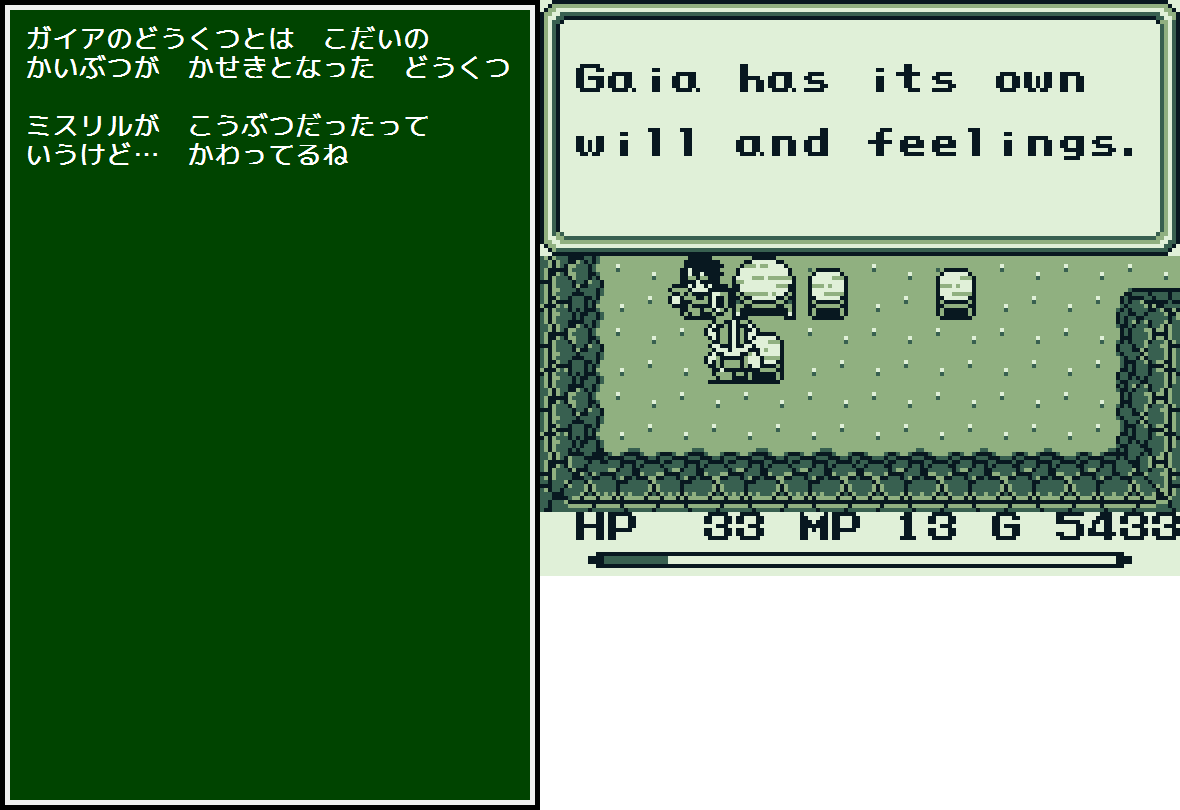
In Japanese, an NPC shares information about the cave’s origins:
Gaia’s Cave is a cave of an ancient monster that fossilized. They say mithril was its favorite food… Pretty strange, huh?
So, basically, when you’re walking through the cave, you’re actually walking inside the guts of a giant, ancient, fossilized monster. That’s pretty cool!
In the English release, this line changed to:
Gaia has its own will and feelings. It likes Silver. Strange, isn’t it?
Although it’s not vital information, the unique worldbuilding found in the original line was dropped during translation. It was replaced with different text, but I’m not quite sure why.
Again, this text change doesn’t affect anything important, but it’s a good example of the kind of background details that were lost throughout this game’s translation.
Silver Solutions
At one point in the Japanese version of the game, you and a dwarf set out to find the legendary mithril ore. Once you obtain it, you can buy mithril-based equipment.
In the English version, “mithril” was replaced with “silver” everywhere:
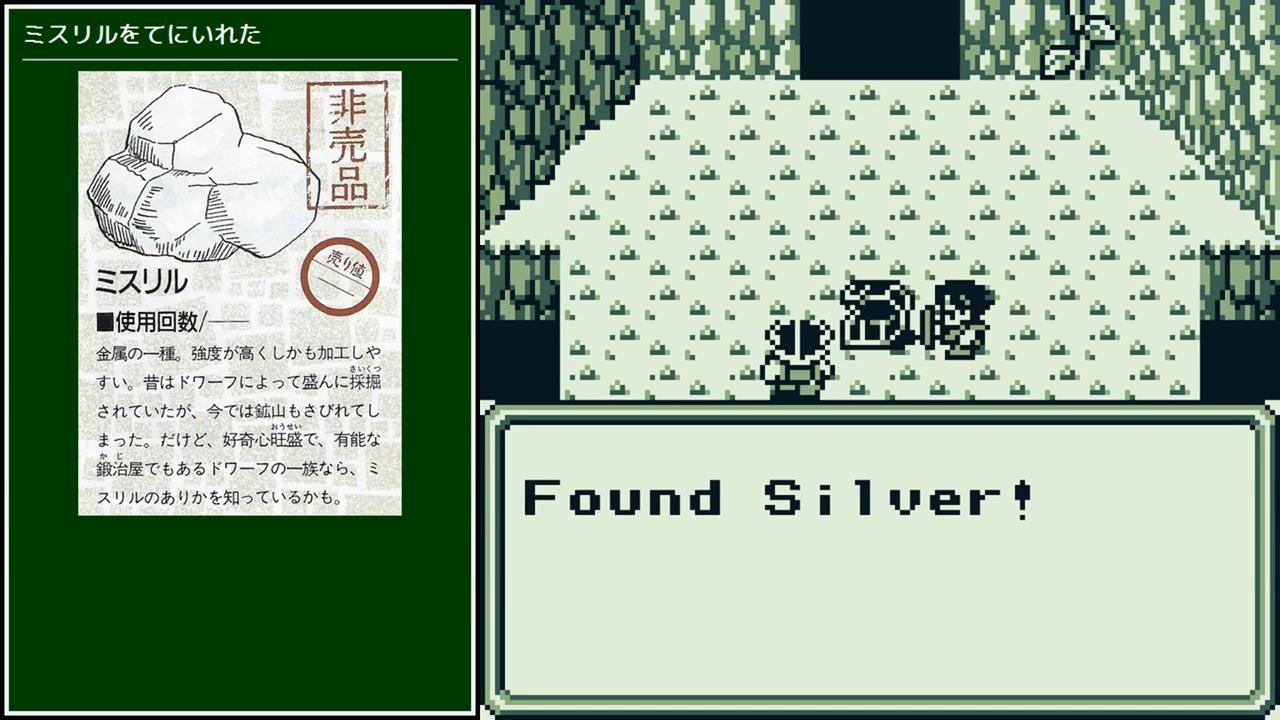
Presumably, the change was made because the “mithril” name originally comes from J. R. R. Tolkien’s writings and could’ve potentially opened Square up to a legal dispute. This same exact mithril-to-silver change happened in the English localizations of Final Fantasy and Final Fantasy IV as well:
 | 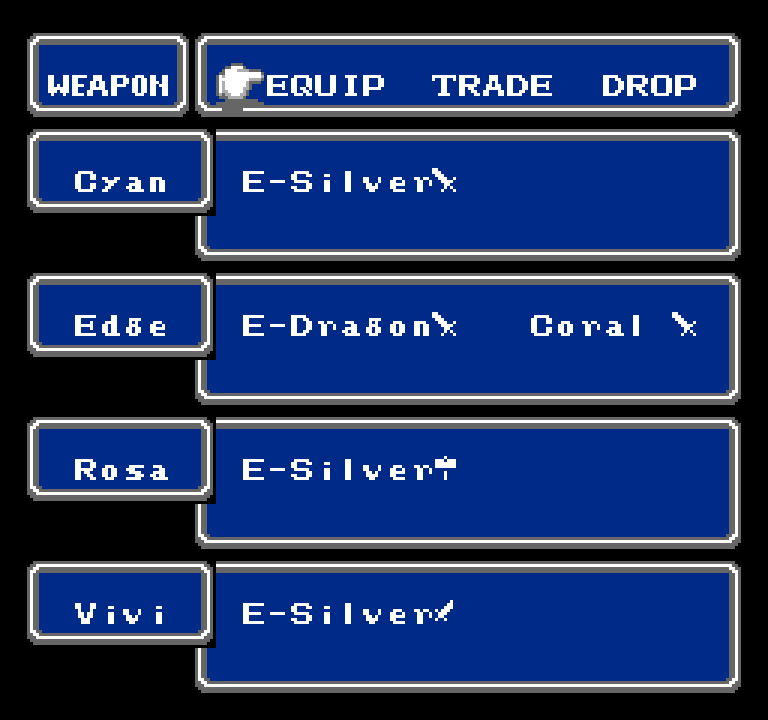 |
| Final Fantasy (Famicom) | Final Fantasy (NES) |
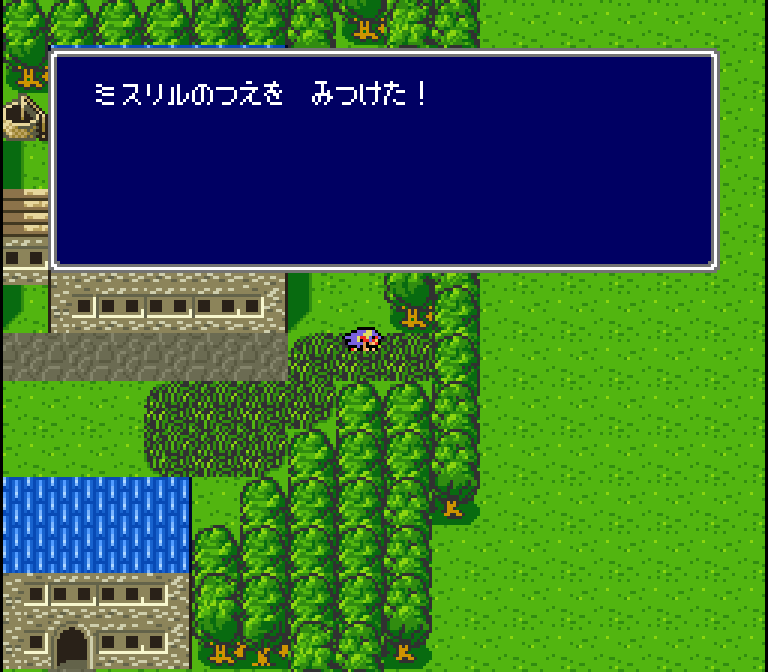 |  |
| Final Fantasy IV (Super Famicom) | Final Fantasy II (Super NES) |
Changing mithril to silver in Final Fantasy Adventure did create a new problem though – there was already at least one other silver item in the game: the Silver Key. This explains why the Silver Key was renamed the Bronze Key earlier in the game:
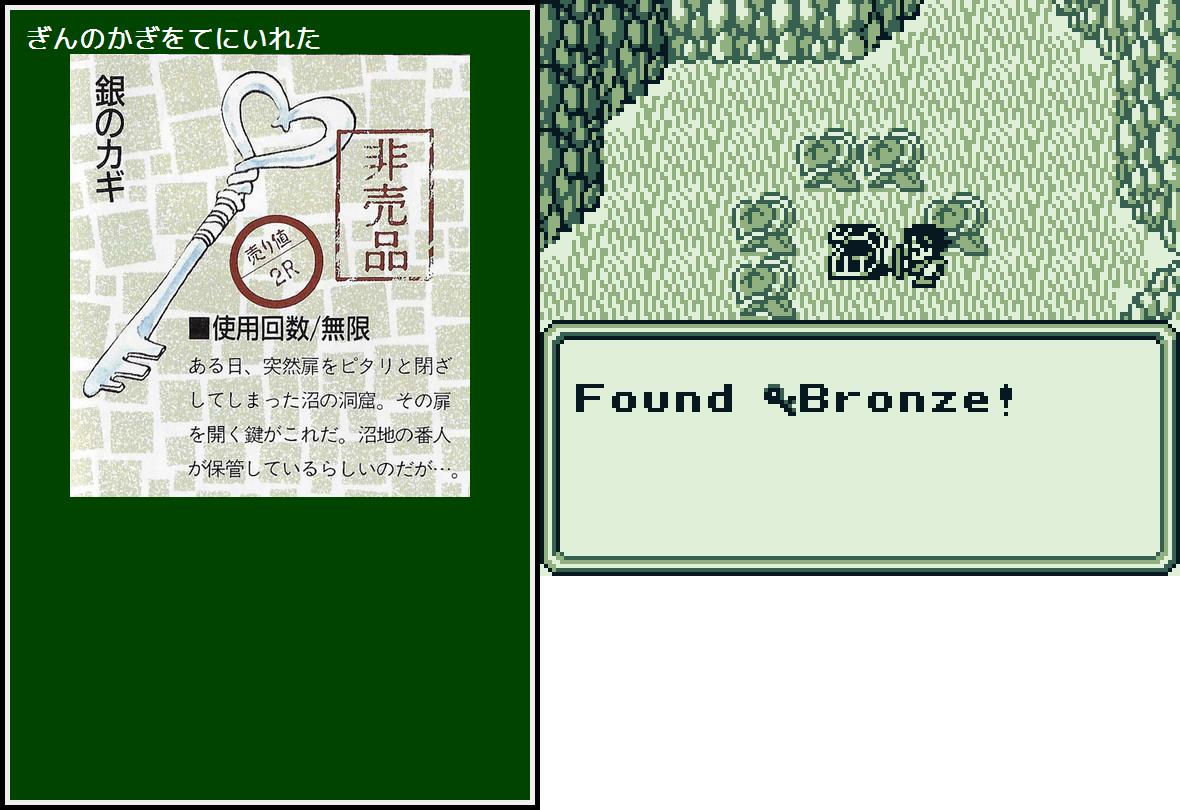
In the Japanese game, Gaia’s Cave won’t let anyone inside unless they have mithril. So, logically, changing “mithril” to “silver” means that in the English game, the cave won’t let anyone inside unless they have silver. But wait, you can get Silver Keys before this point in the game! So that simple name change would break the game’s logic. Fortunately, someone on the localization team realized this and renamed the Silver Key as well.
It might not seem like much, but this attention to detail shows that the mithril-to-silver change wasn’t a rushed, last-minute search-and-replace affair. The localizers clearly considered the potential consequences of renaming mithril everywhere and adapted as needed.
Ridding Rust
At one point in the game, you need to ride a mine cart. But when you first find it, it’s so rusty that it won’t move at all. To fix this problem, you’re required to get a special item elsewhere in the world.
In Japanese, this item is called the サビトレール (sabi torēru), which is a slightly whimsical way of saying “Rust Remover”. Maybe something like “Rust Taker-Offer” or “Rust B Gone” – it has that sort of feel, basically.
In English, the item is simply called “Oil”.
Incidentally, this sabi torēru name also appears in the Japanese version of Final Fantasy VI:
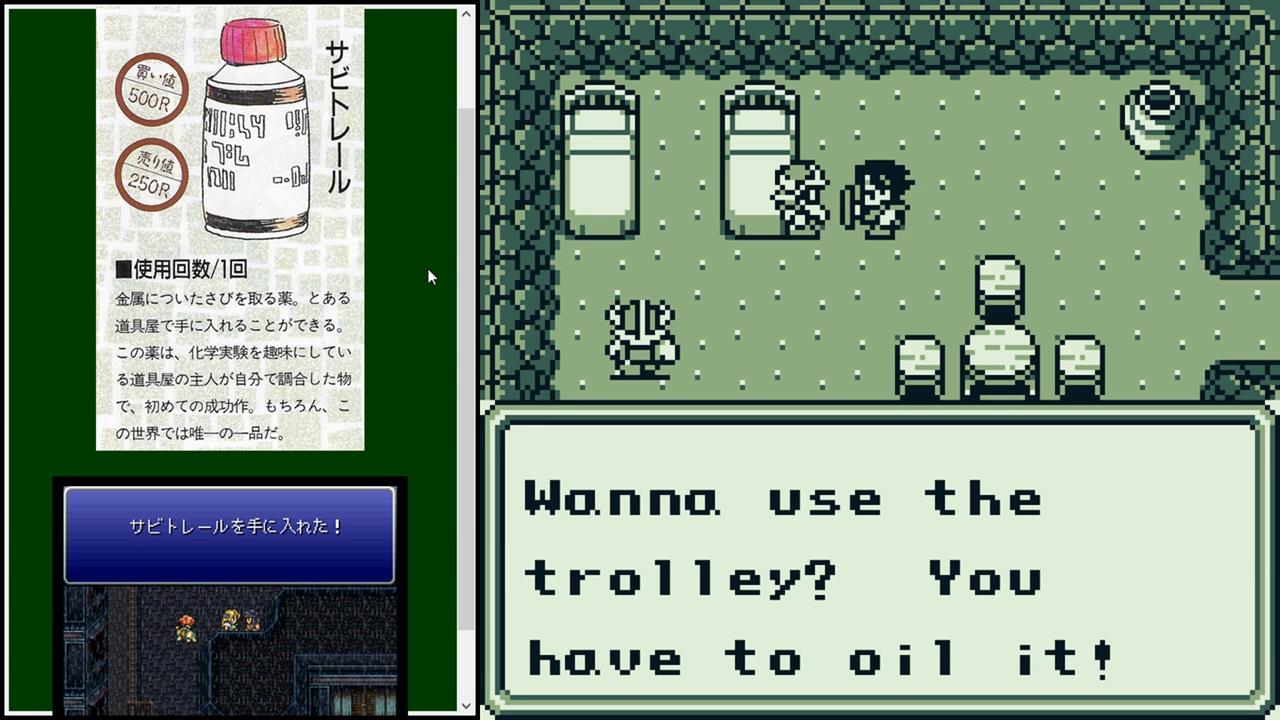
The shared name between the two games is probably just a neat coincidence, though, as “___ torēru” is a common naming pattern with real-life cleaning products:
Avoiding Alcohol
In the Japanese version of the game, there’s an item called バッカスのさけ (bakkasu no sake, "Bacchus' Wine"). The official Japanese guide says that drinking it gets you excited and fills your entire body with energy. The end result is that your physical strength stat is temporarily increased.
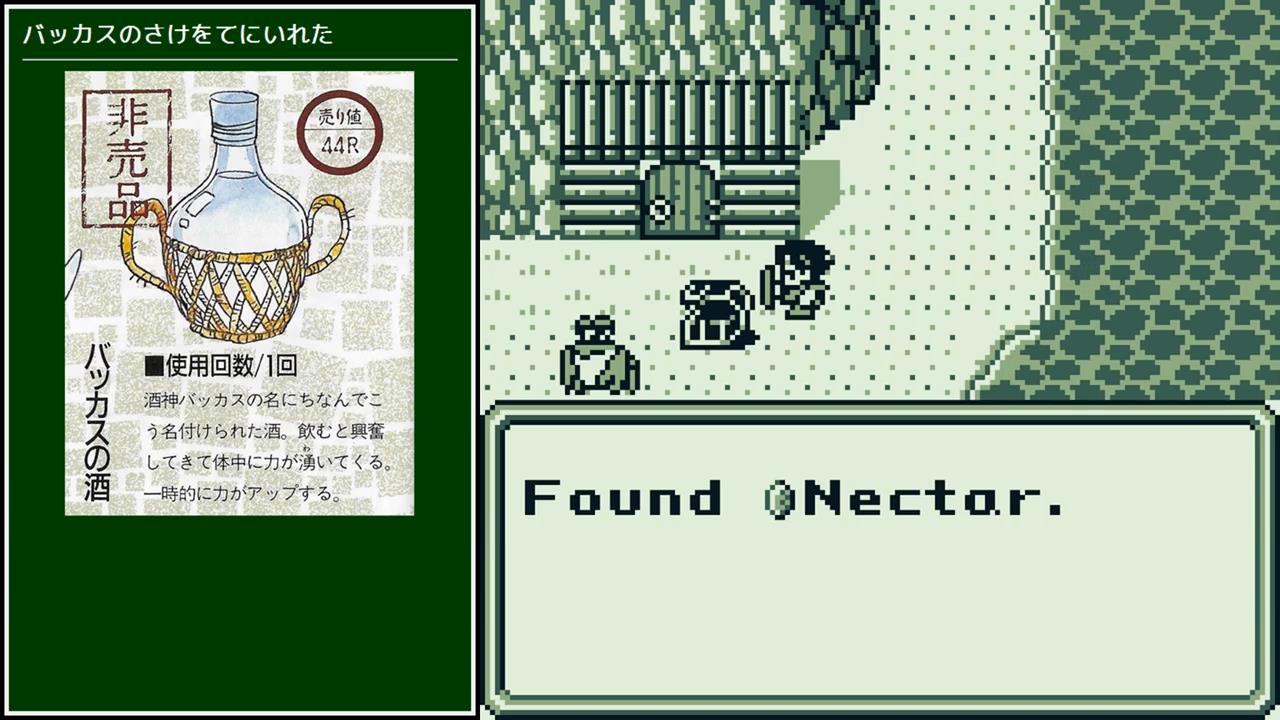
Due to Nintendo of America’s content policies at the time, references to alcohol weren’t permitted. So “Bacchus’ Wine” was renamed “Nectar” in the English version of the game.
On a slightly different note, Bacchus’ Wine is another recurring item in the Final Fantasy series:
I believe a slightly different バッカスリキュール (bakkasu rikyūru, "Bacchus Liqueur") was mentioned in the Japanese and English versions of Final Fantasy Tactics, but it wasn’t until Final Fantasy IV’s PlayStation port in 2001 that the actual item appeared in an English Final Fantasy game. But even then, it was simply called “Bacchus”. The name and item appeared again in the 2005 Game Boy Advance port of Final Fantasy IV, but it was called “Bacchus’ Cider” in the English version as way to skirt around the clear alcohol reference.
Basically, this is all to say that the change from “Bacchus’ Wine” to “Nectar” in Final Fantasy Adventure was just one part of a very long localization anti-tradition.
Moogles and Chocobos
Some enemies can transform you into a strange creature for a short period of time. In Japanese, this creature is known as a モーグリ (mōguri). In English, this was localized as “Moogle”.
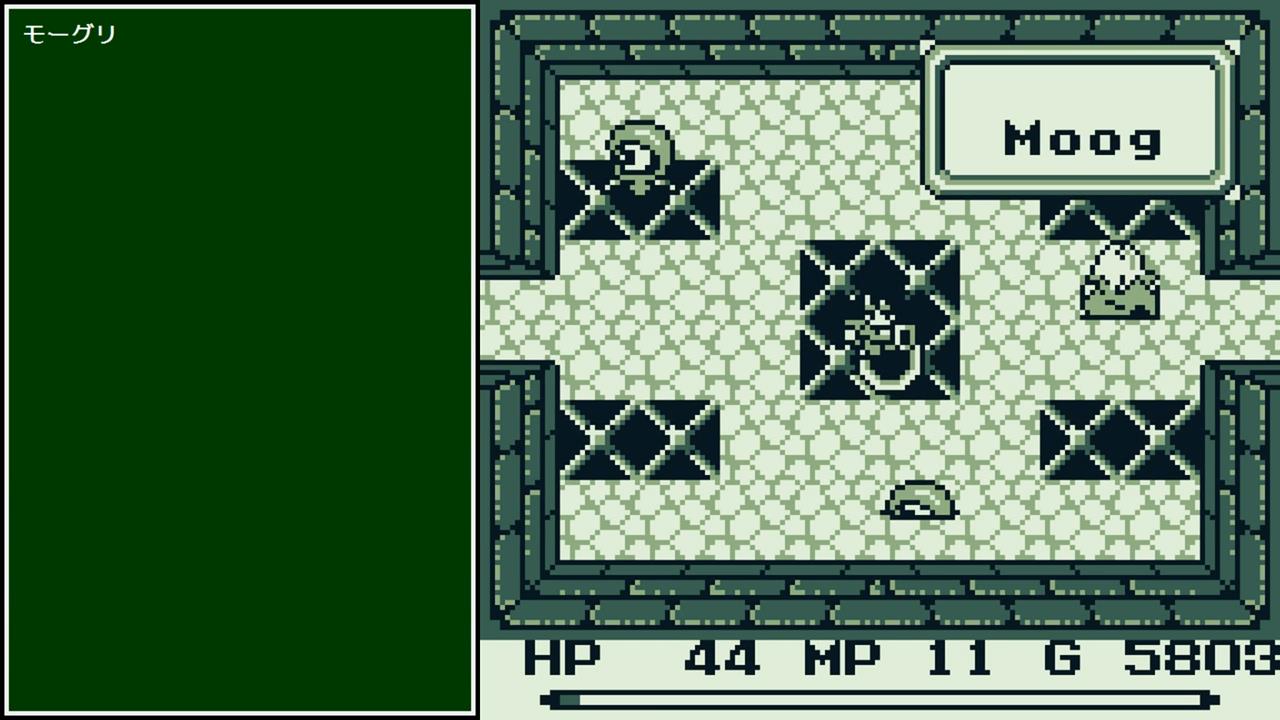
According to the official Japanese guide, a mōguri is a creature that’s like a mix between a cat and a bat.
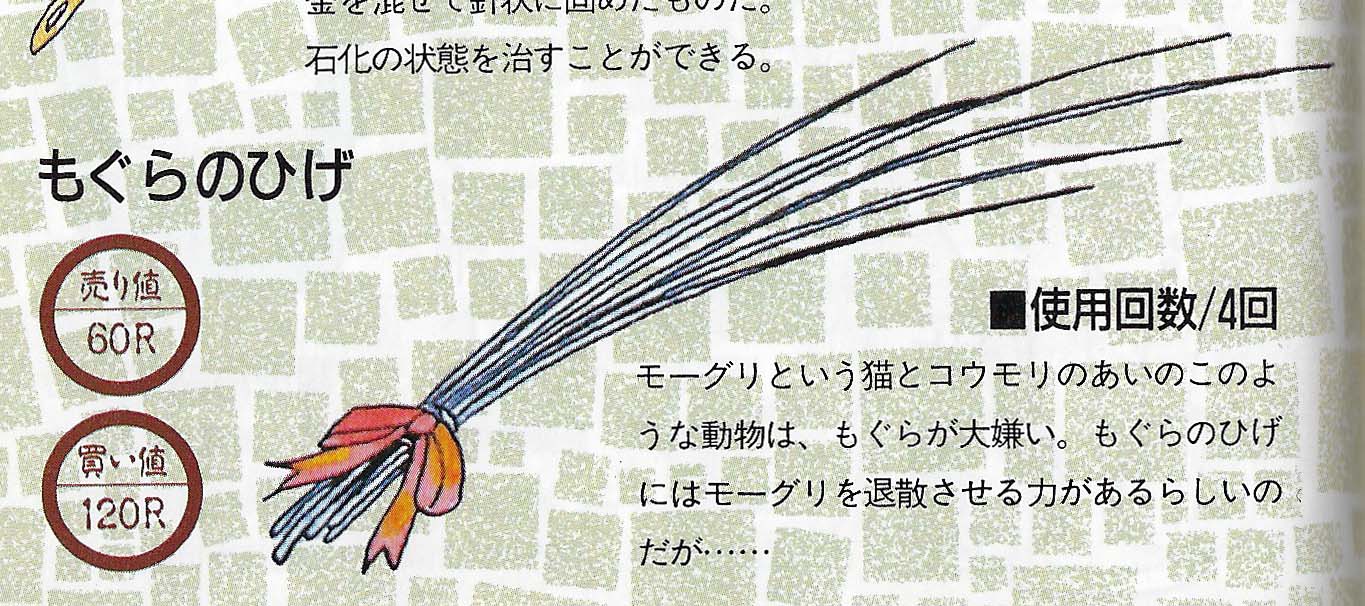
Until recently, I never really knew that these iconic Final Fantasy creatures were based on anything in real life like this, but it makes sense now that I look at it. Of course, it’s hard to tell when you’re looking at tiny sprites on a tiny screen, but it’s clearer when looking at official artwork:
Moogles previously debuted in 1988 in the Japan-only release of Final Fantasy III for the Famicom. Because of this, Final Fantasy Adventure seems to be the first time Moogles appeared in a game outside of Japan.
Similarly, Final Fantasy Adventure might’ve marked the international debut of the Final Fantasy series’ iconic chocobo creatures too. Online sources suggest the game was released in early November 1991, a few weeks before the English version of Final Fantasy IV for the Super NES, which also featured chocobos:
Basically, Final Fantasy Adventure was very likely the first game to introduce multiple iconic staples of the Final Fantasy series outside of Japan.
Silence Item
In the game, there are one-time-use items that cast a magic spell when used. One of these items temporarily stops enemies from using magic. In the English release, this item is simply known as “Silence”. But in the original Japanese game, it’s called something very different: Monkey Baby.
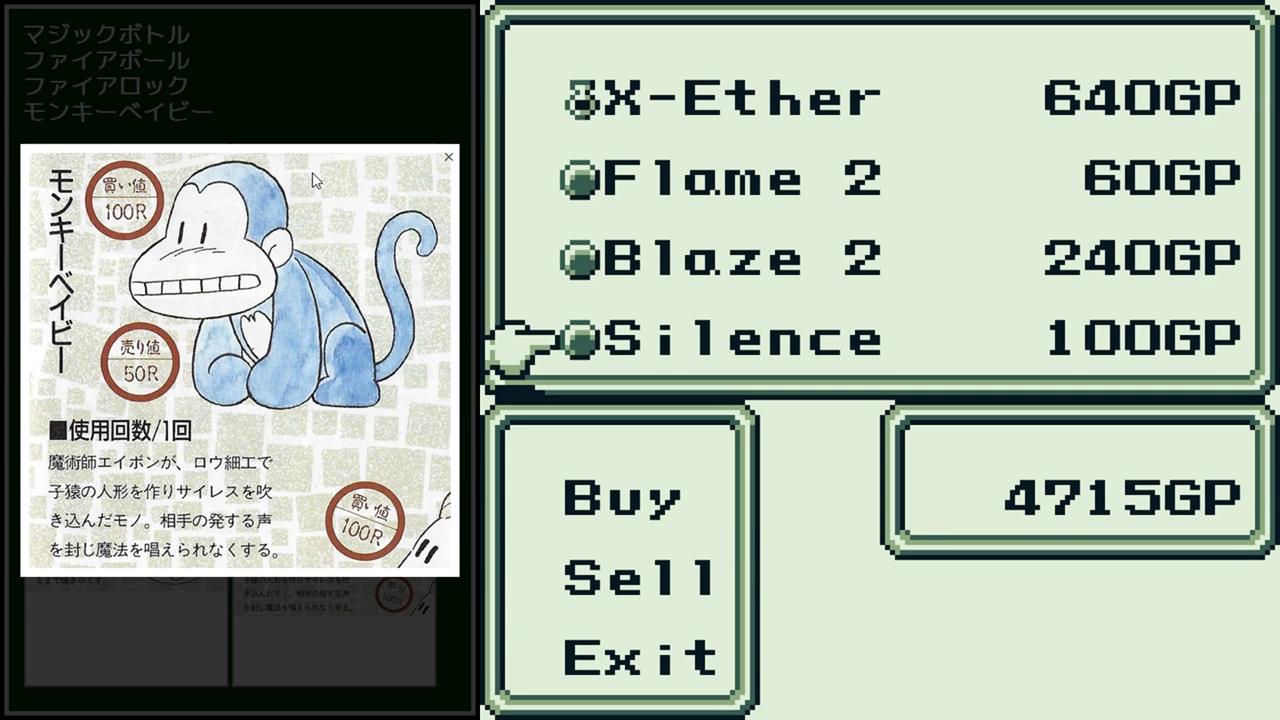
The Japanese game itself gives no explanation for this “Monkey Baby” name. Luckily, the official guide provides background information for the item:
A figure of a baby monkey, made of wax, and instilled with Silence by the wizard Eibon. It blocks the target’s voice, preventing the chanting of spells.
I focused on this unusual item during the live comparison streams, but there was one thing I didn’t get at the time: who the heck is “Eibon”? There’s no such character in the game, and the official guide constantly mentions an evil wizard who created many of the crazy enemies in the game.
It turns out that Eibon is a sorcerer in H.P. Lovecraft’s Cthulu Mythos. This makes sense – the early Final Fantasy games regularly referenced and took inspiration from Dungeons & Dragons, H.P. Lovecraft, and such. It’s just surprising to see this simple little Game Boy game forming such a big connection with such an unimportant item!
But this leaves us with one last question: why is this item a monkey, of all things? It’s pretty simple – it’s based on the three wise monkeys that accompany the proverb of “see no evil, hear no evil, speak no evil”:
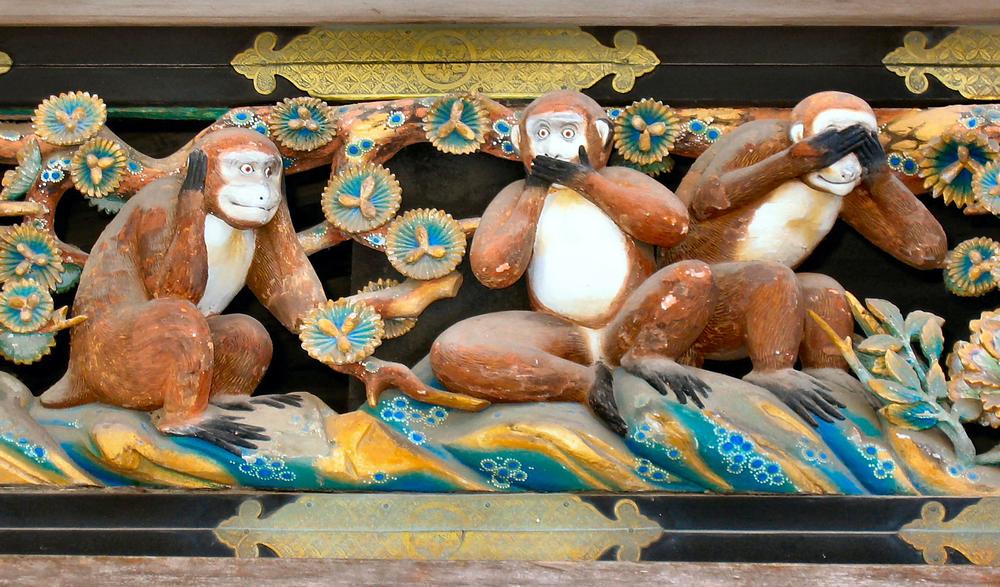
Photo by MichaelMaggs - Own work, CC BY-SA 2.5, Link
Palm Tree Puzzle
Around this point in the game, you know where you need to go next. In the Japanese version, it’s a cave called the “Sand Labyrinth”. In English, this was changed to “Medusa’s Cave”.
The problem is, there’s no clear way to find it or get inside it. Finding the cave was problematic enough for players that the English localizers changed the first vague hint into a more direct gameplay tip.
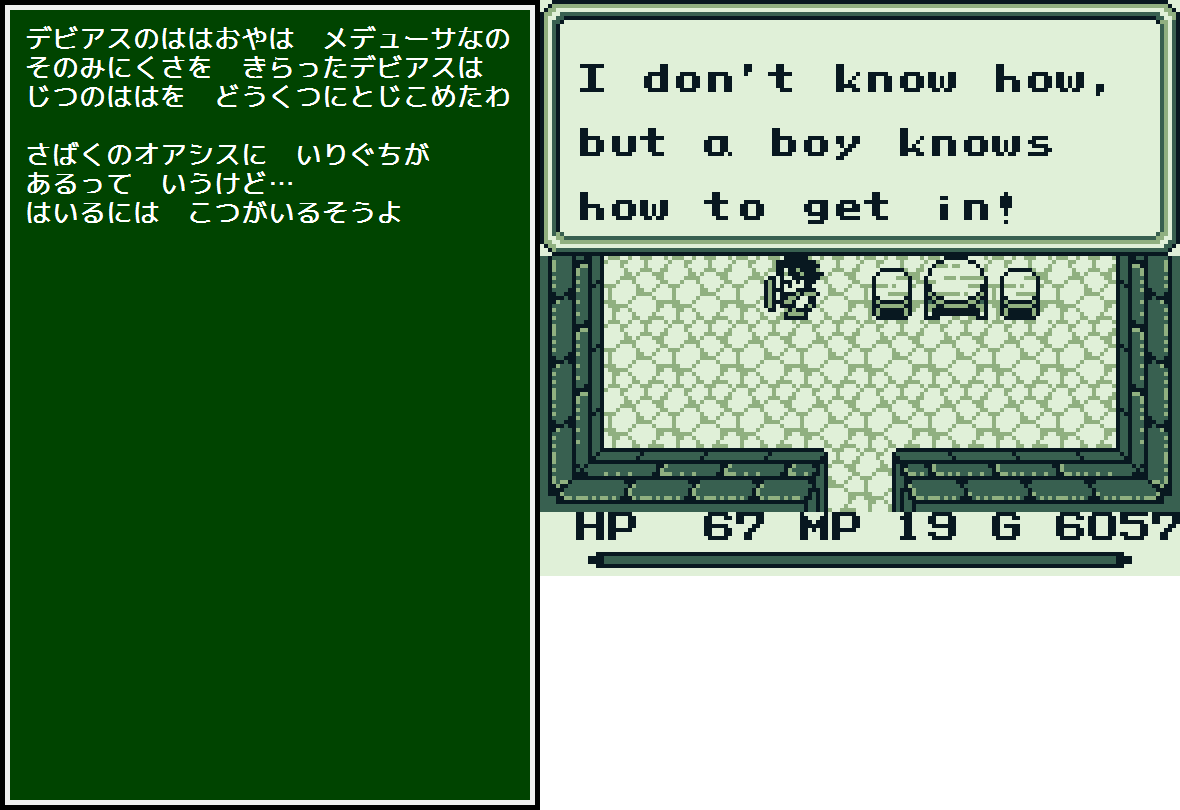
Once you reach the town of Jadd, a boy offers to tell you how to get inside the secret cave. But only in exchange for a certain item:
Once you give the boy his requested item, you finally learn about the hidden cave… Sort of. Instead of telling you outright, he gives a cryptic clue:
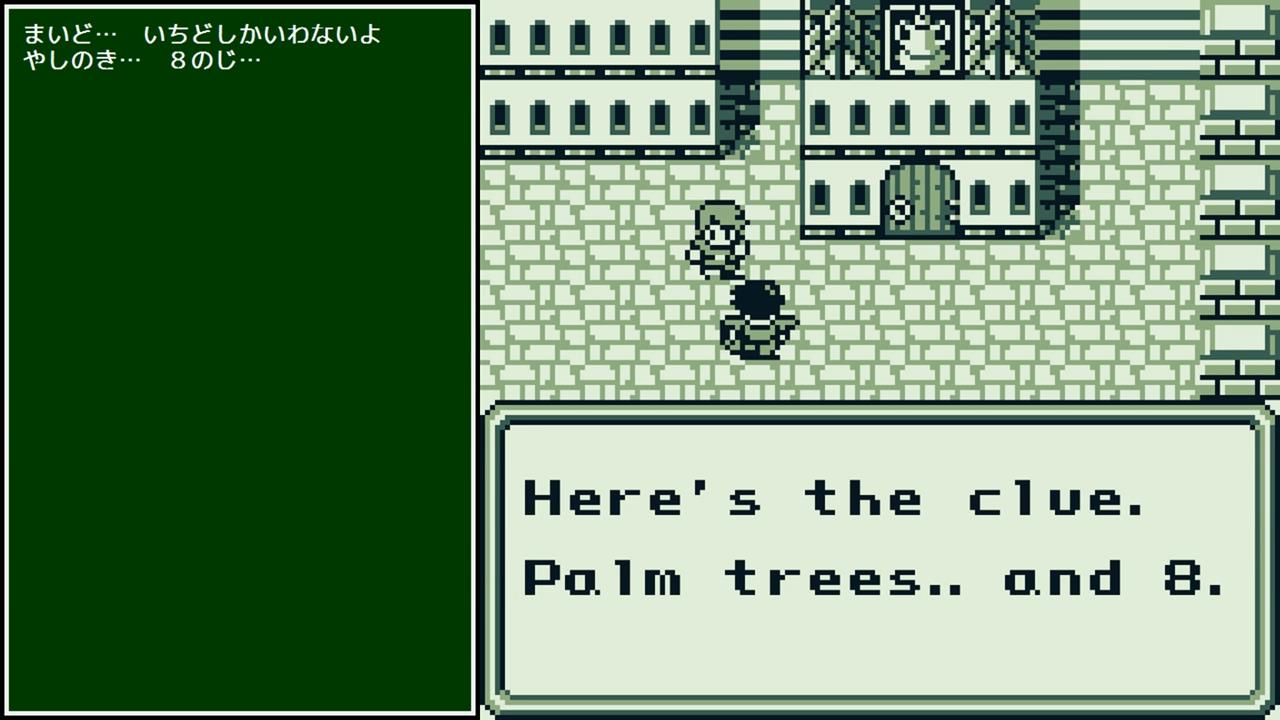
The game continues to be vague with its hints here. The area in question is pretty large, filled with palm trees, and actually has a tree formation outside of town that looks like a figure-8:
Again, if you’ve played Final Fantasy Adventure, there’s a good chance you got stuck on this part for a while. If you ever come across posts or reviews of the game, you’ll almost definitely find this “palm trees and 8” topic brought up:
As we can see above, it’s commonly believed that this trouble spot in the game was due to its poor translation. In actuality, the palm tree hint isn’t much different from the original Japanese text. It was just a poorly designed puzzle to begin with.
The problem was big enough that Nintendo Power magazine shared the solution in two separate issues:
I don’t remember how I figured out this palm tree thing myself, but I’m guessing I relied on one of these Nintendo Power issues.
Looking back now, I’m impressed that the English localizers realized how problematic this puzzle was. They tried to make it less problematic for the English release, but I feel more could’ve been done to steer players in the right direction.
Medusa Matters
This part of the game has a lot of talk about Medusa-related stuff. Some details were changed or dropped in the English version:
Amanda’s Demise
At the end of the hidden cave, you have to fight a big Medusa boss. Afterward, the main character’s friend Amanda reveals she was bitten by the Medusa during the battle. Unfortunately, being bitten by a Medusa turns you into a Medusa soon after. So Amanda begs the main character to kill her before she transforms.
As expected, references to Medusa blood in the Japanese version were changed into Medusa tears in the English version. A direct reference to death was removed, while the word “kill” was phrased as “do away. I assume “do away” was used to skirt around Nintendo of America’s content policies, but I feel it works really well here whether that was the case or not.
During her pleading, Amanda says some more stuff. Here’s how the Japanese and English lines look side by side. For reference, Amanda needed the Medusa blood/tears to save her brother Lester, who was transformed into a parrot.
| Japanese Version (basic translation) | English Translation |
| Amanda: Half of my blood has changed into Medusa blood. | Amanda: I’m gonna turn into a Medusa in a short while…… |
| Kill me… and have the parrot drink the blood… so that Lester can turn back to normal… | Please do away with me and take my tears, HERO. |
| HERO: There’s no way I can do that, Amanda! | HERO: No, I can’t! |
| Amanda: You’re going to let my death be for nothing?! | Amanda: I’m gonna be a monster…… I might lose my mind and hurt people…… |
| *cough* | |
| See… You’re starting to look like prey to me now… | |
| Please let my final act of love for Lester come true… | Please…… HERO…… Before I lose my feelings…… Please take my tears to Lester. Tell him that I loved him…… |
| And… please don’t force me to kill the one I love… | .. Please …… HERO …… |
| I… beg… of you… | Pl.. please.. .. .. |
The most noteworthy difference is near the end, when Amanda talks about a “loved one” in Japanese. It’s not 100% clear from the way it’s phrased, but it seems very likely that she’s referring to the main character with that line.
The ambiguity made me wonder how the line came across to native Japanese speakers, so I did some quick online searching. I did find a Japanese article about it, which I’ve quickly translated here:
In the game, Amanda is portrayed as caring deeply for Lester, so you could interpret this “loved one” as referring to him. Still, it’s hard to imagine her going all the way to Jadd right after turning into a monster, just to kill Lester. So this “loved one” is probably referring to the hero after all.
Perhaps she wanted to confess her feelings at the end, just before dying. Who knows, maybe there were some players who thought “hearing that makes it even harder for me to kill you!”.
Basically, the Japanese script had some interesting stuff here, some of which was dropped from the translation or changed entirely.
There’s also a ton of bonus Seiken Densetsu/Final Fantasy Adventure content – including little-known info from the game’s developers – on the Legends of Localization Patreon!

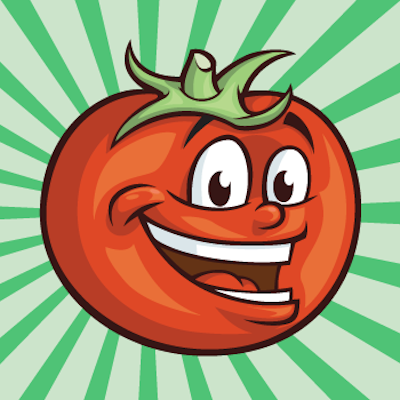
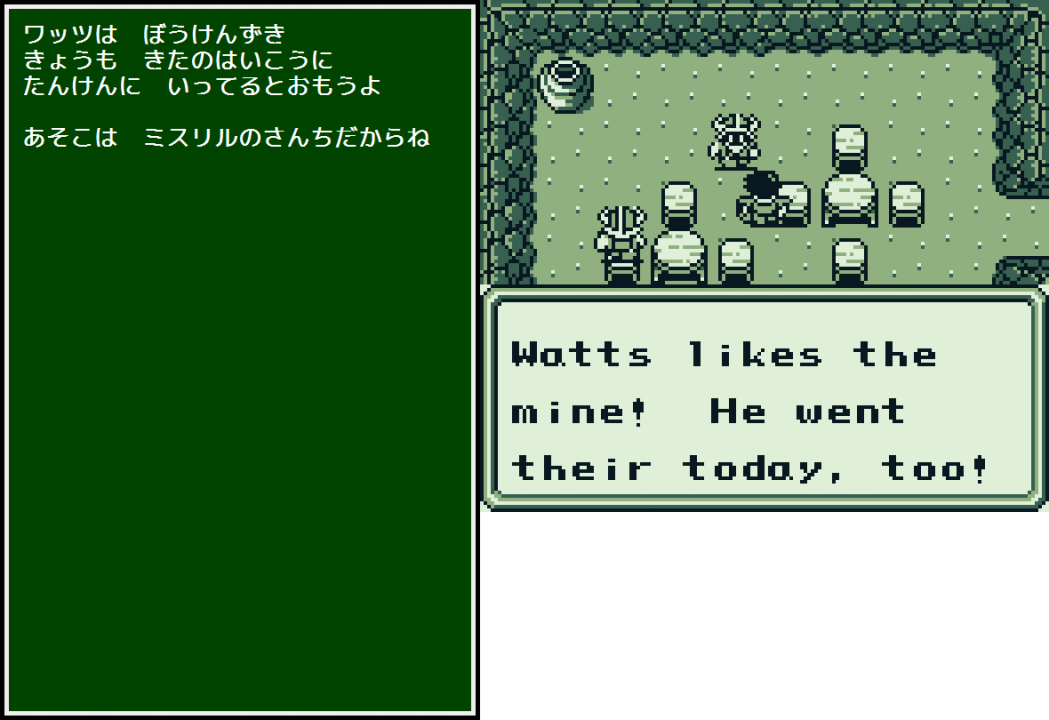
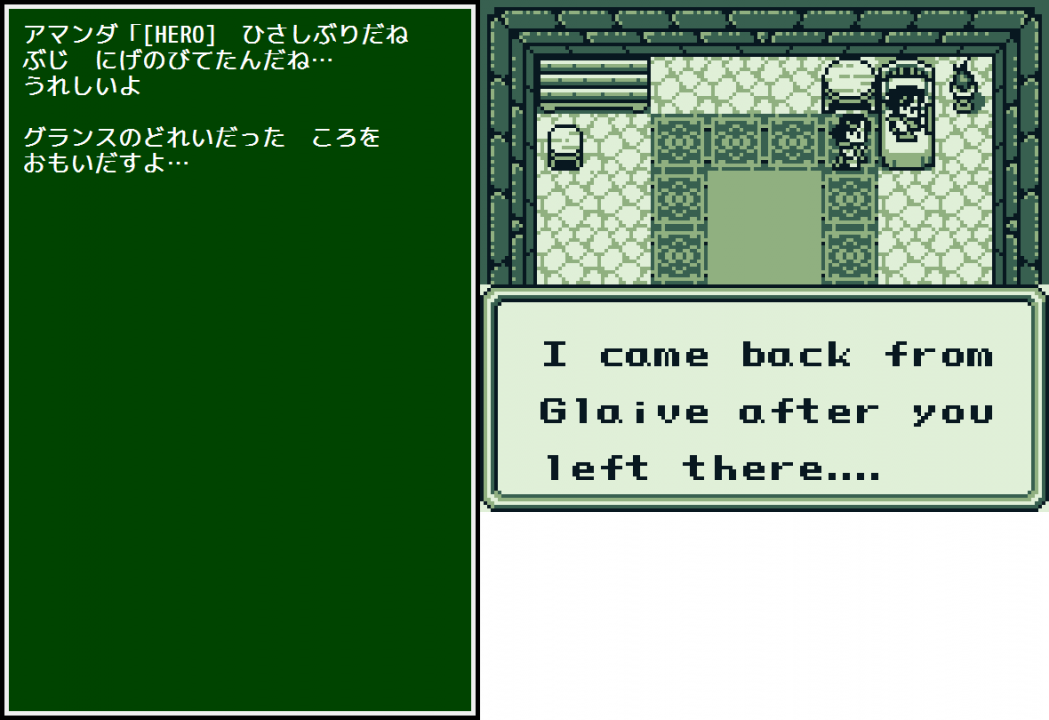
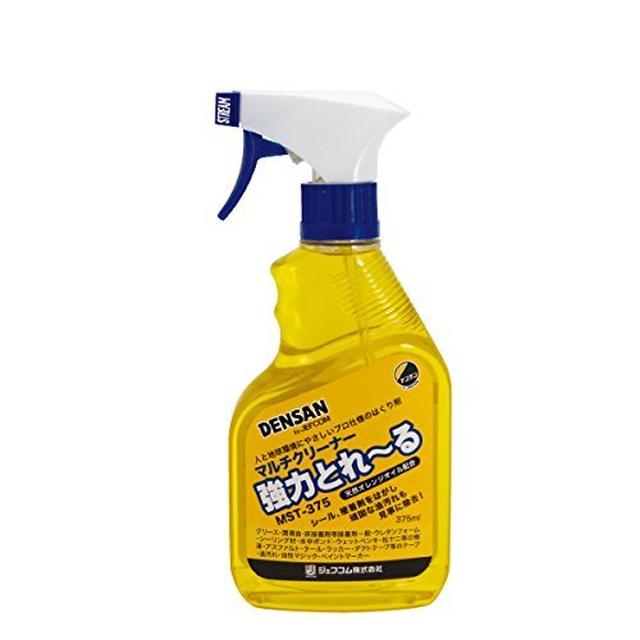
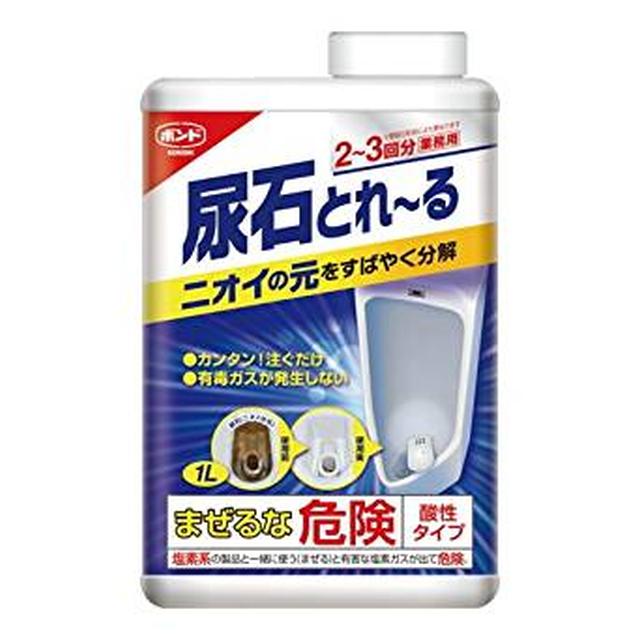
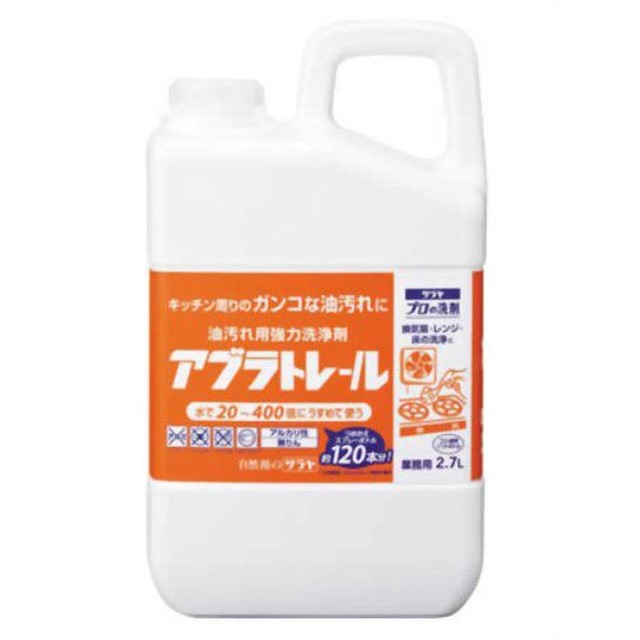
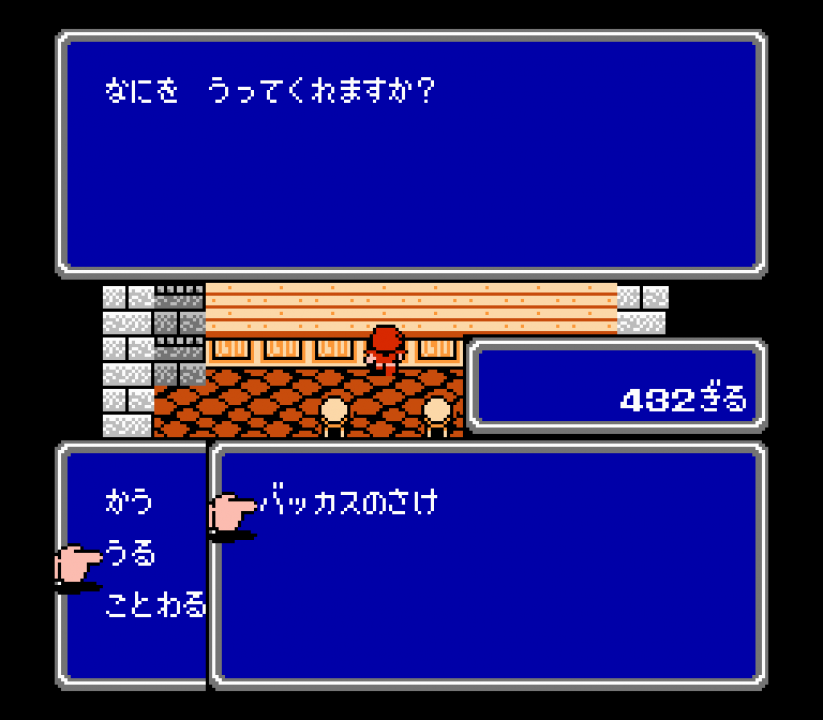
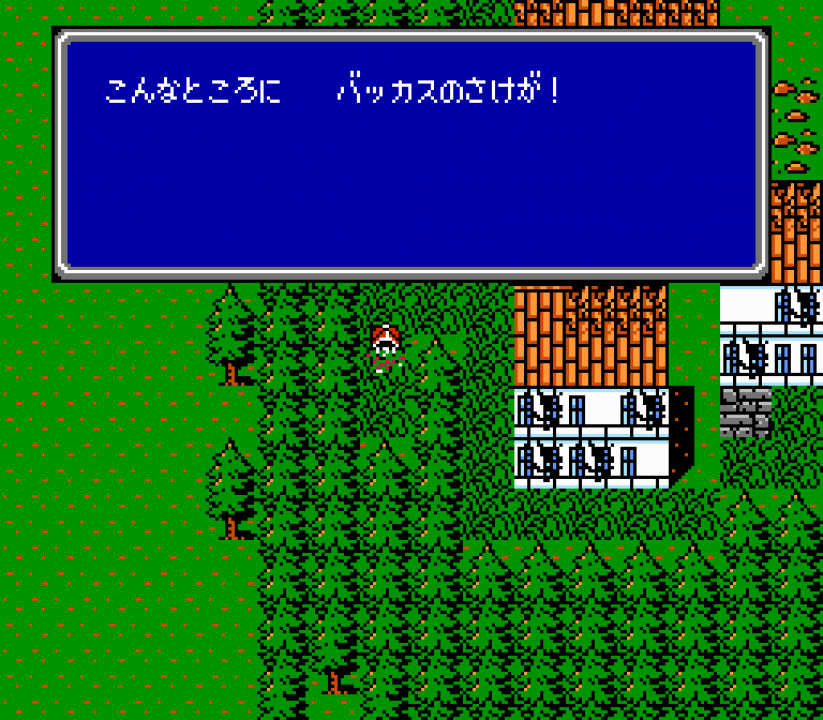
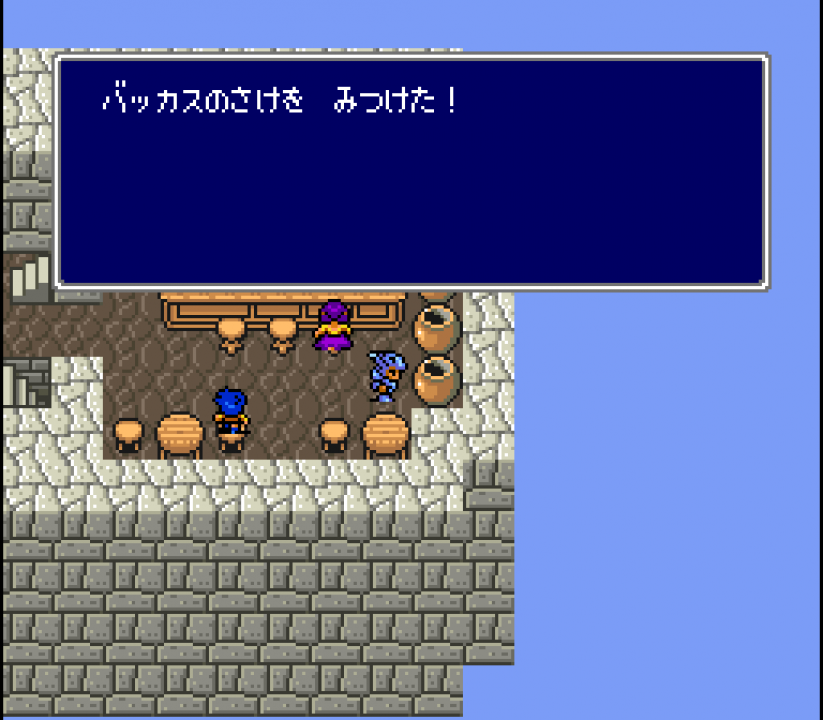
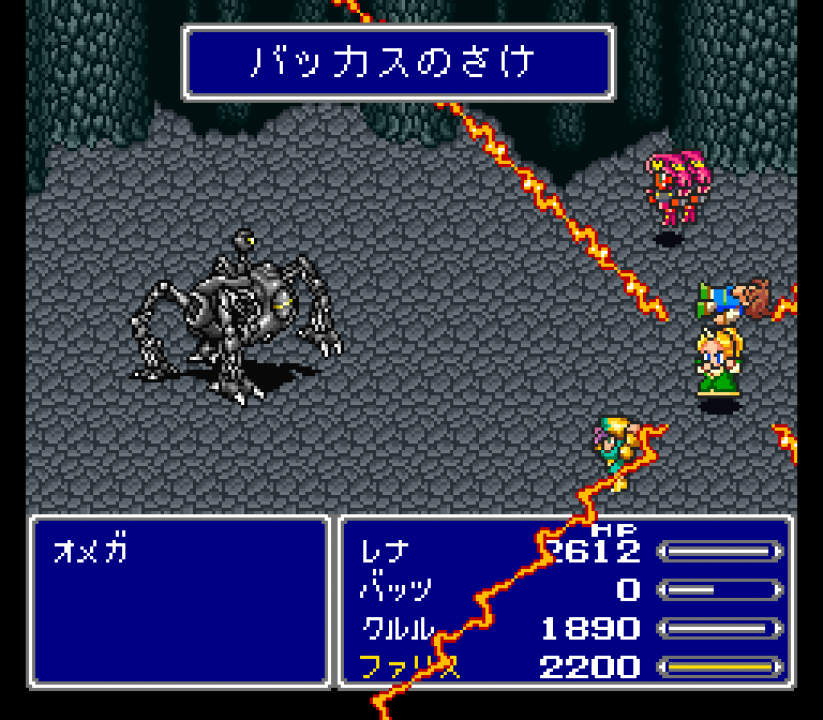

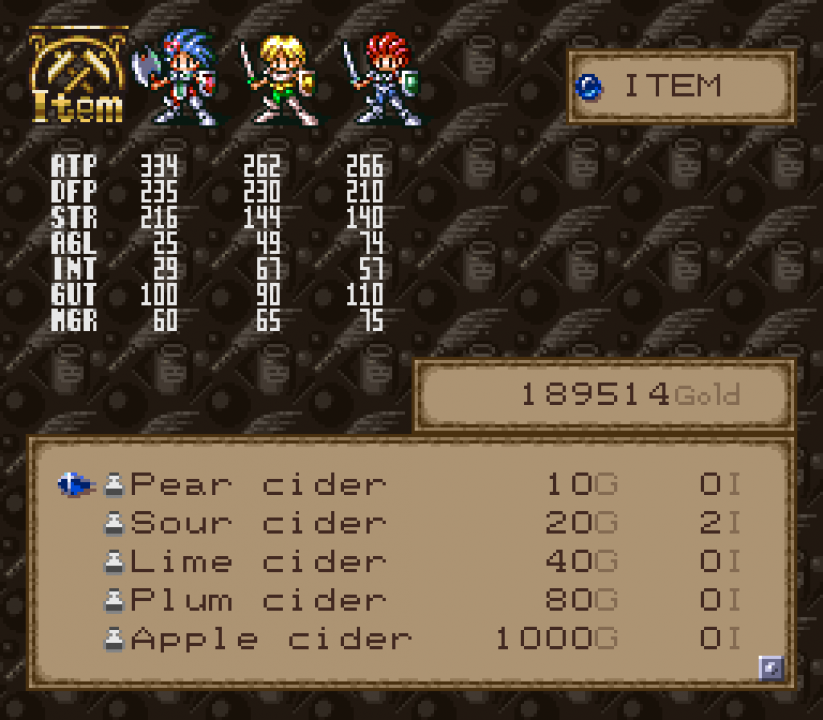
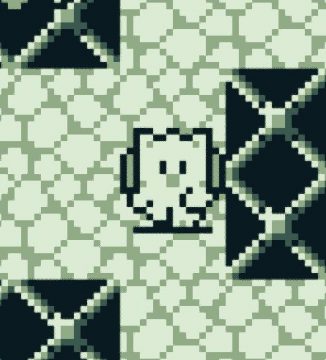
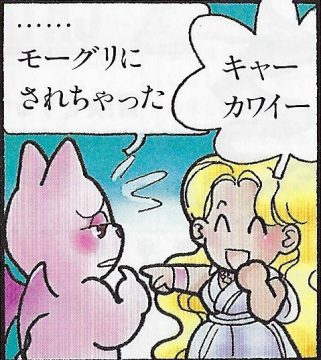
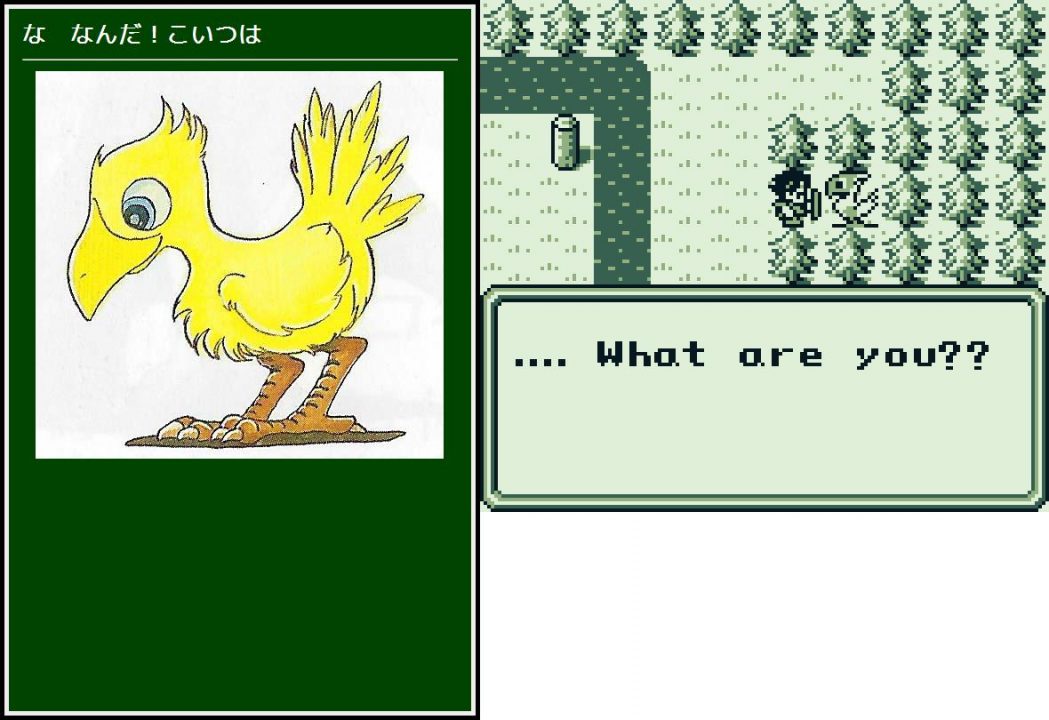
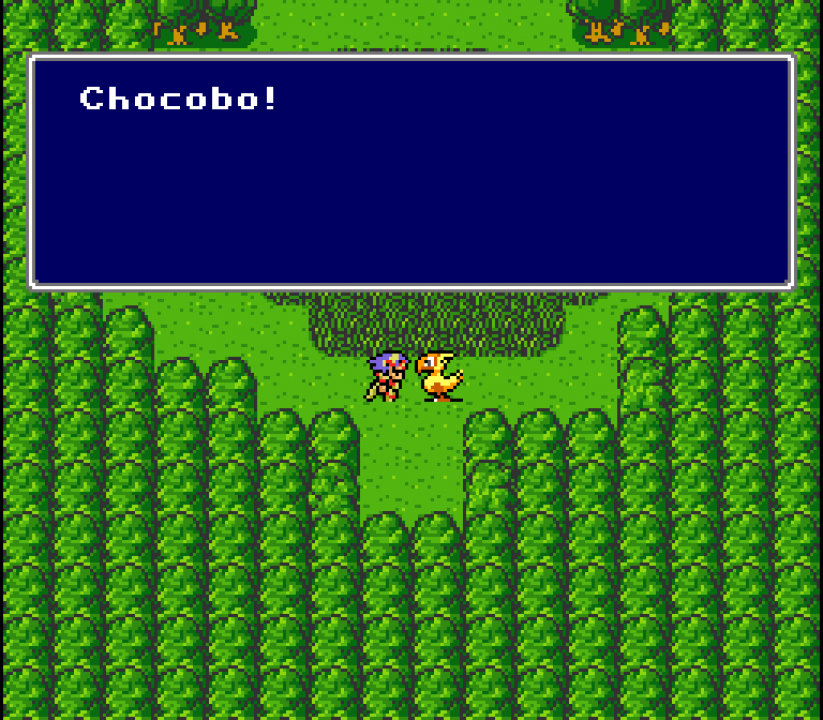

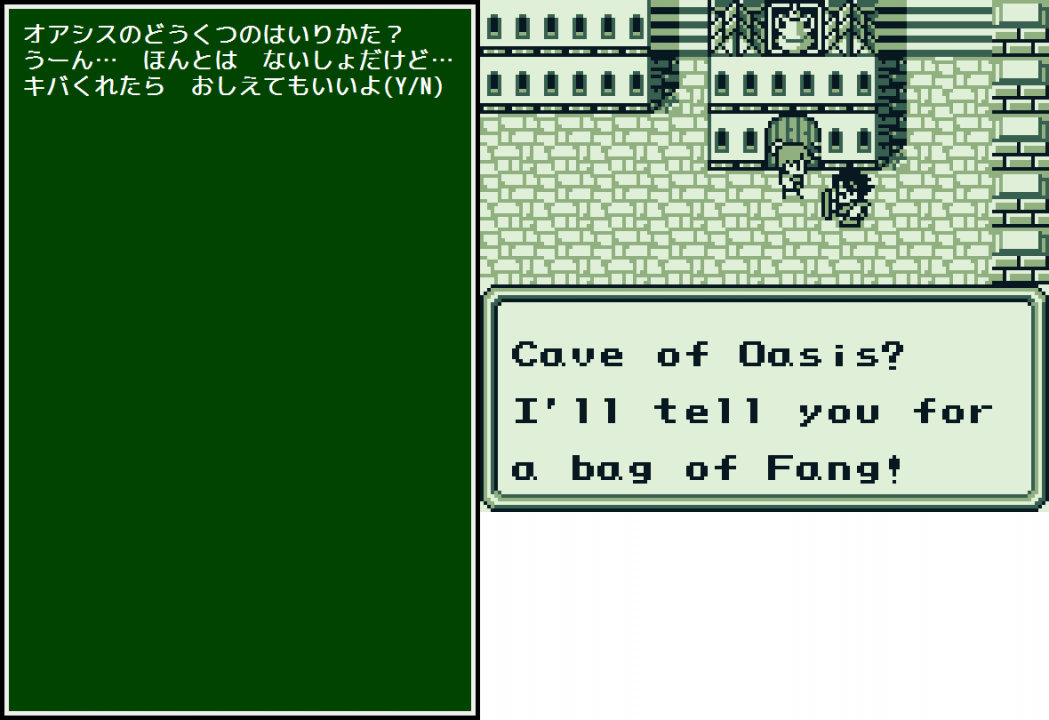
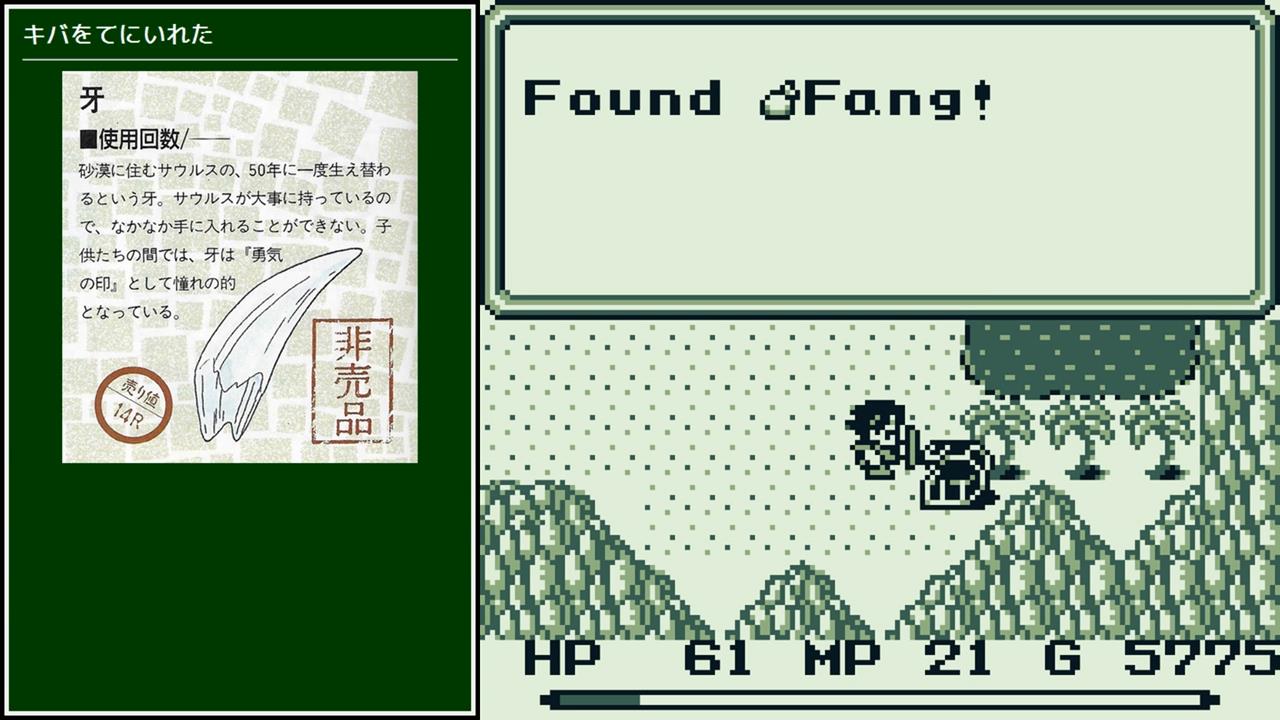
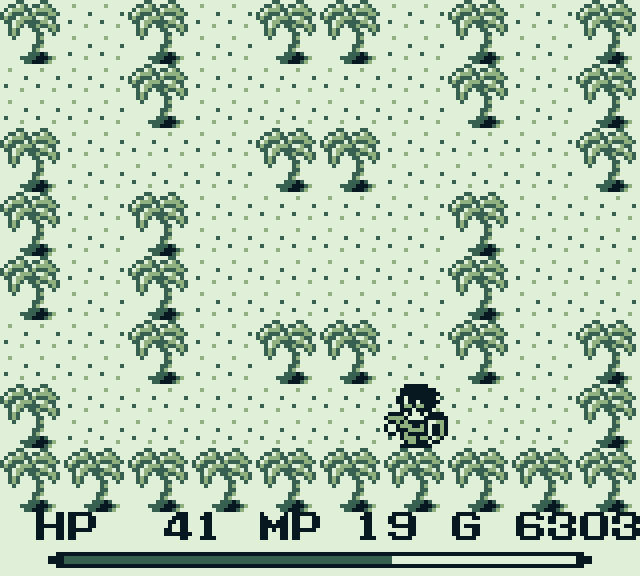

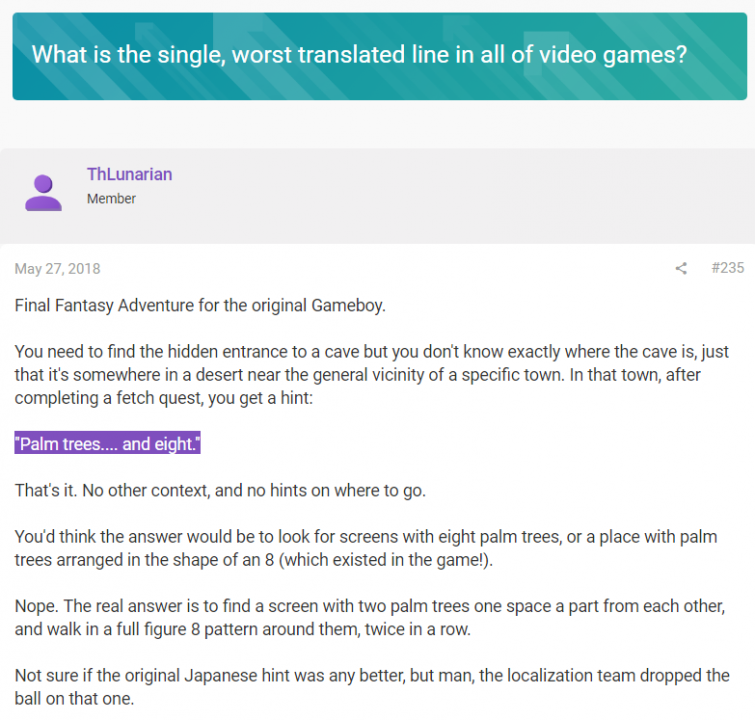

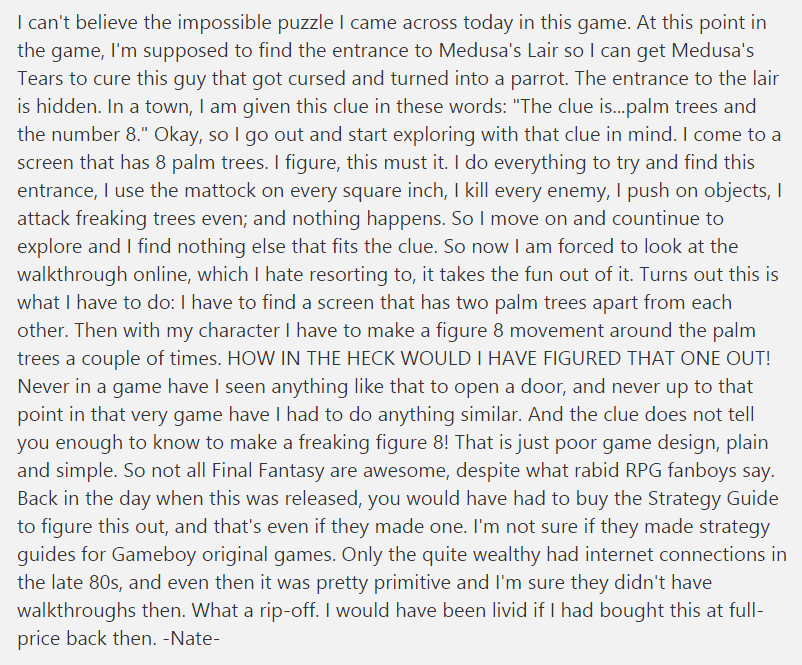
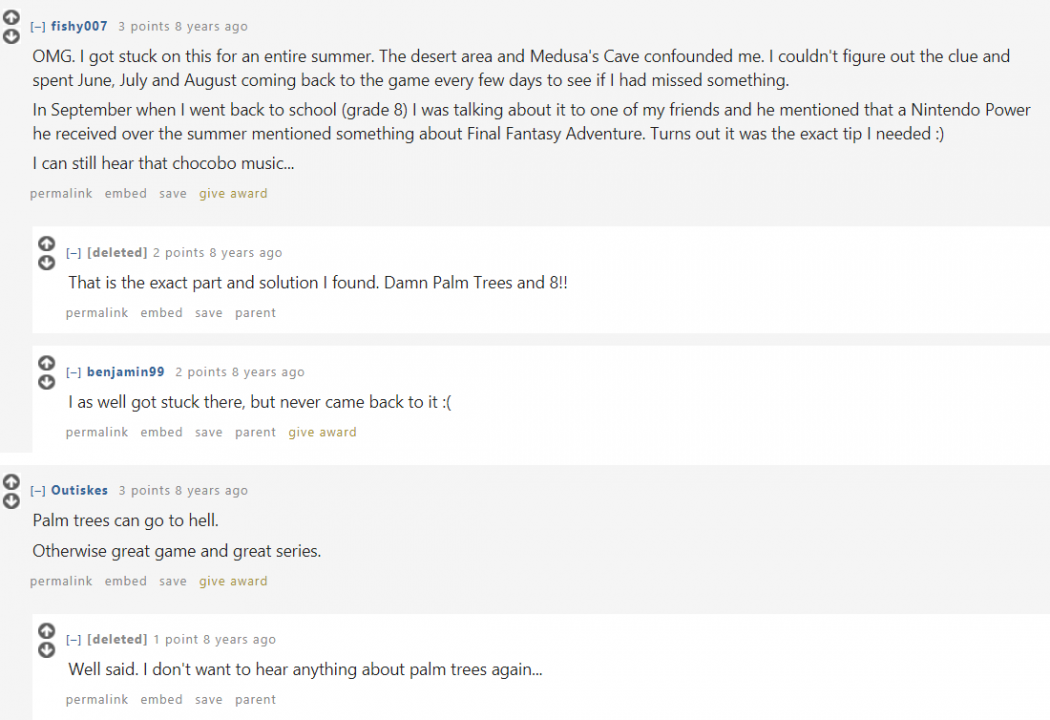
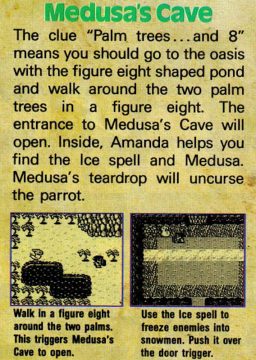
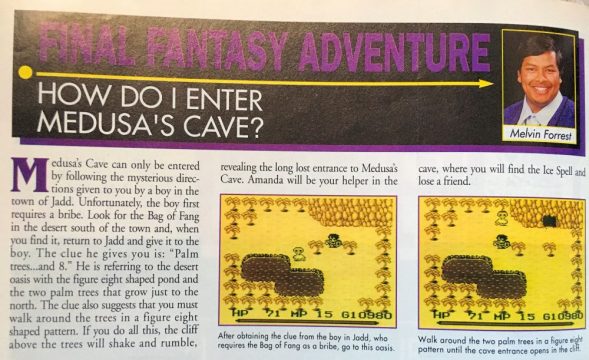
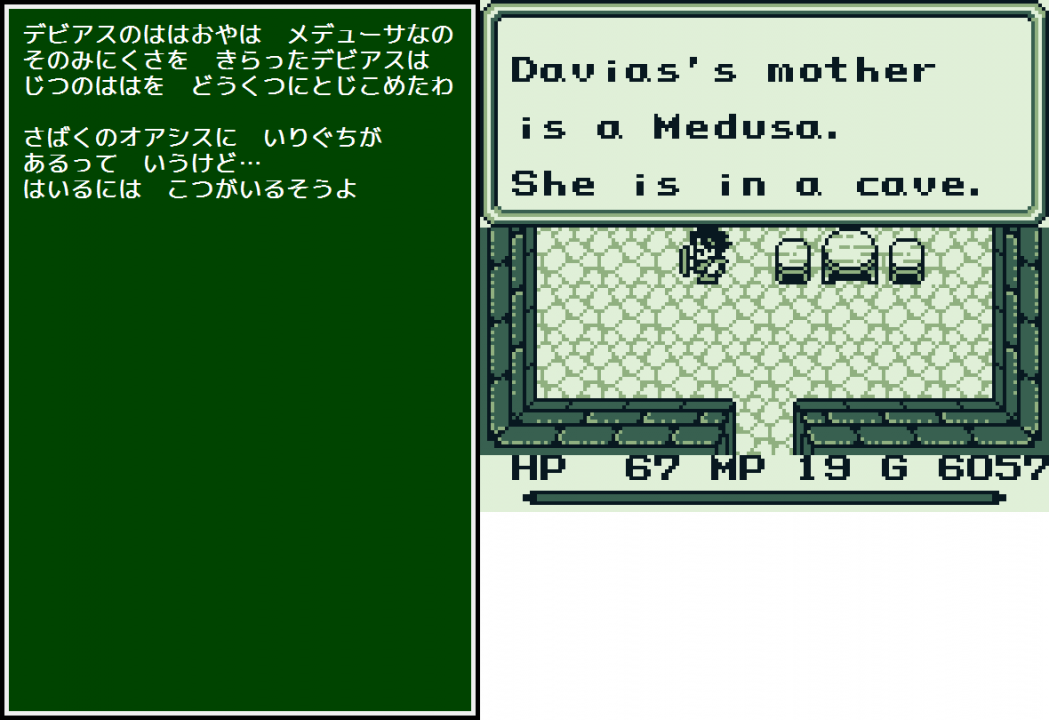
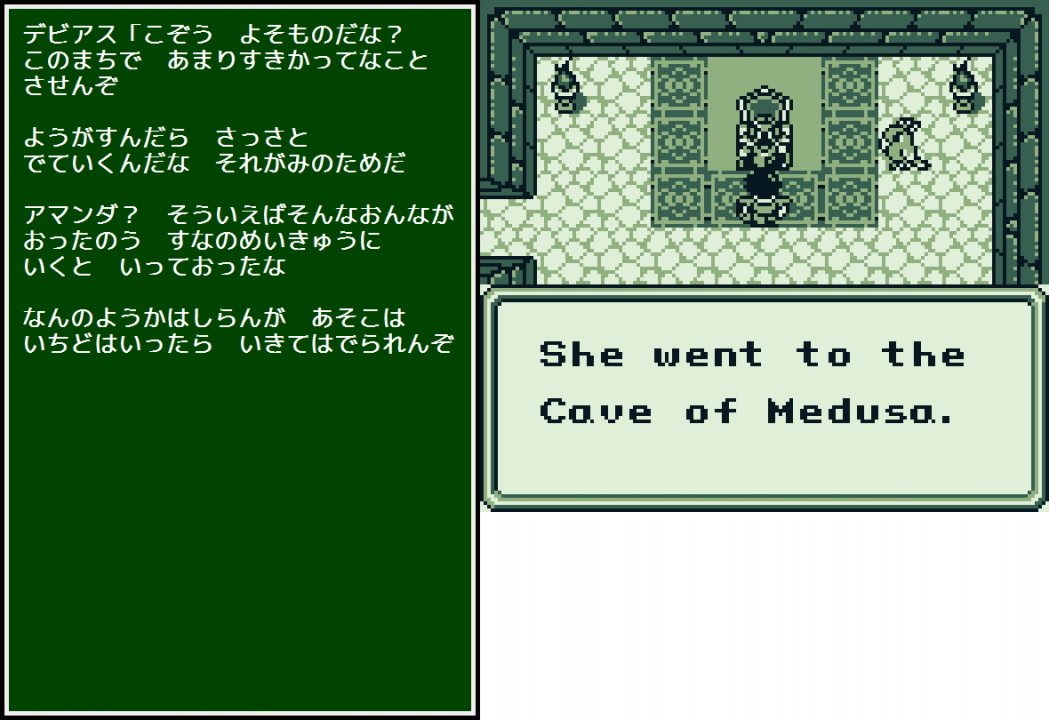
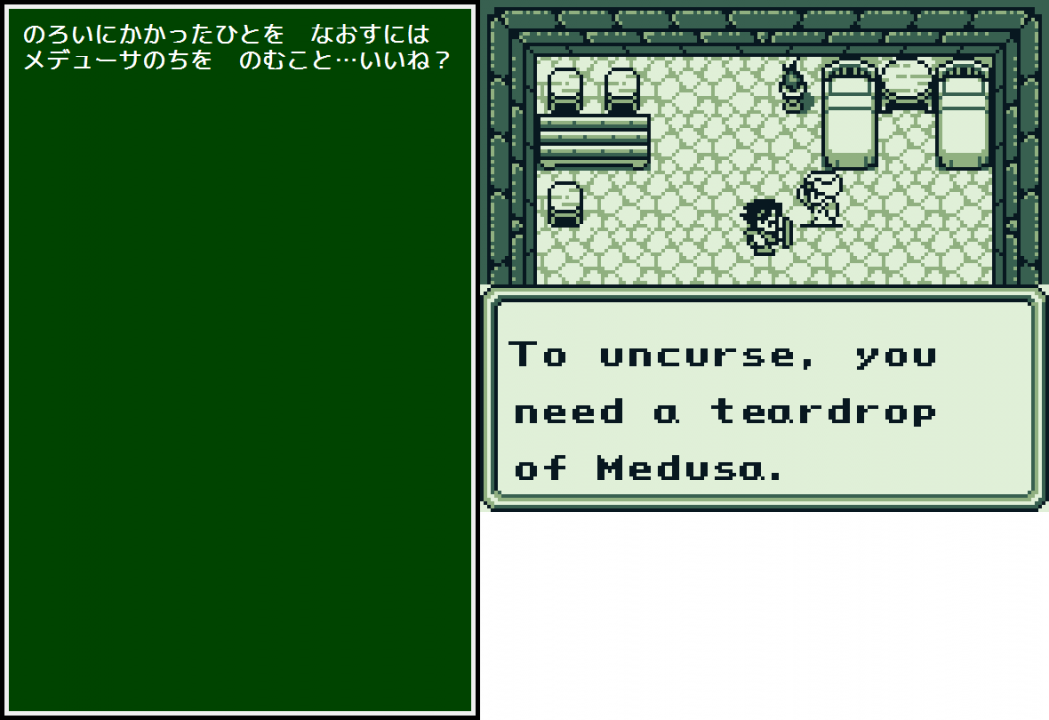

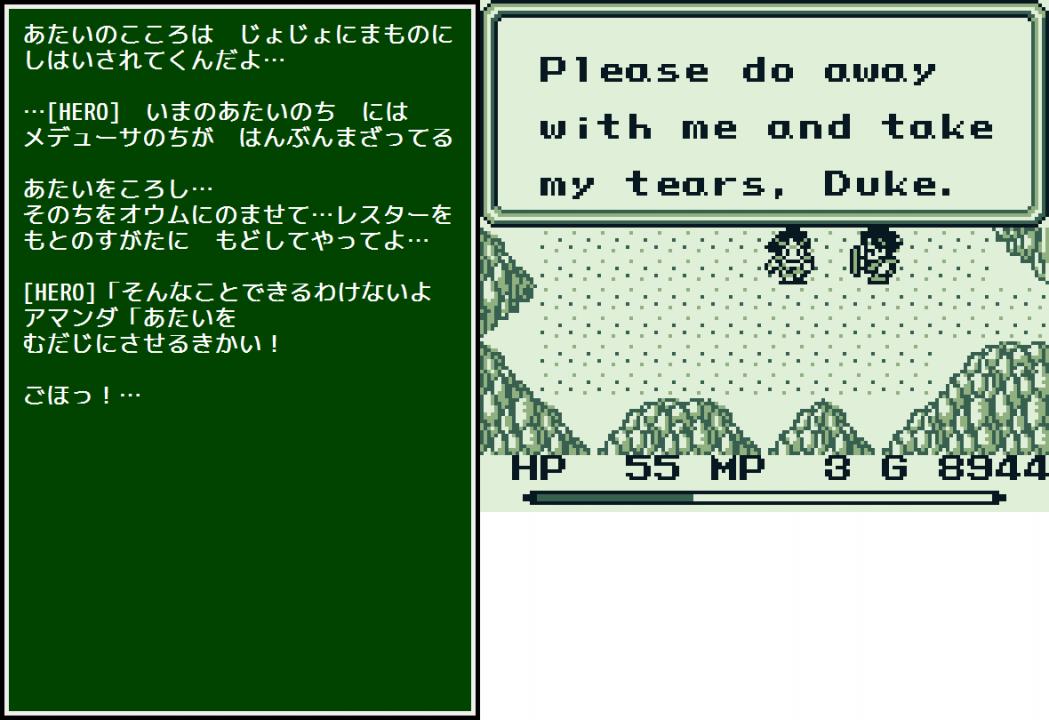
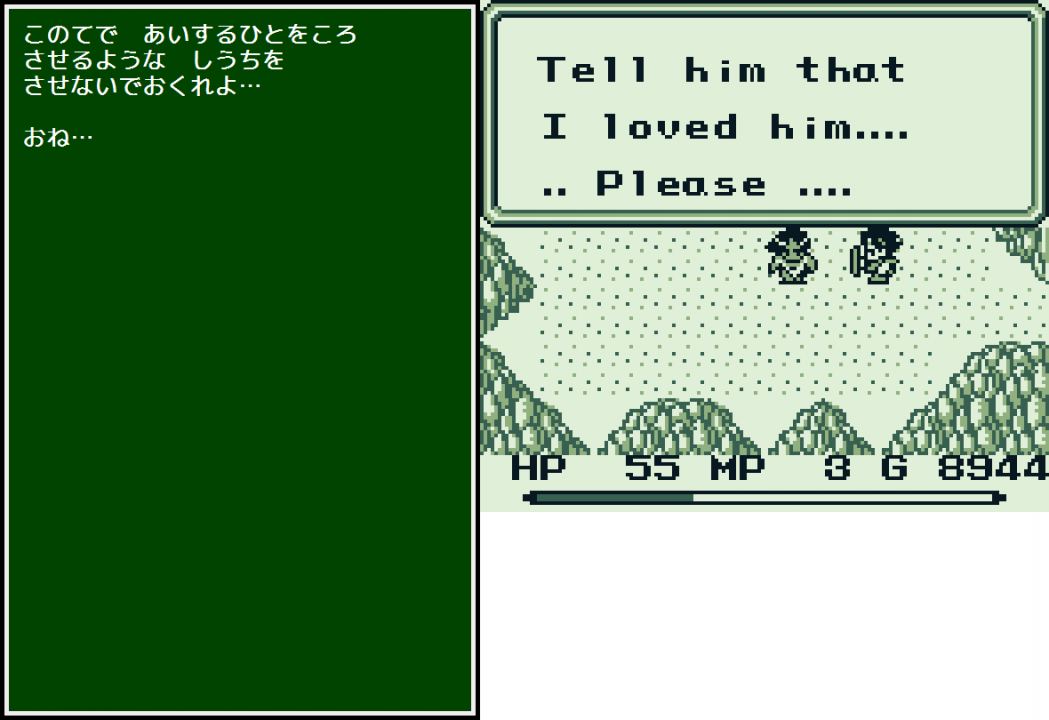
![press start to translate [Final Fantasy IV] press start to translate [Final Fantasy IV]](https://legendsoflocalization.com/wp-content/uploads/2018/05/pressstart.jpg)
Hi Mato, just FYI, the Hyperborean Cycle were Clark Ashton Smith stories, not H.P. Lovecraft. I don’t think Eibon ever showed up in any Lovecraft stories.
I’m admittedly unfamiliar with most of this stuff, but I checked a couple sites before posting the article and it sounded like Eibon was mentioned in some Lovecraft works: https://lovecraft.fandom.com/wiki/Book_of_Eibon
Again, I could be wrong, so let me know if I’m misinterpreting something.
Oh no, I was wrong, as stated below there is a reference to the Book of Eibon in a Lovecraft story. I do think it was created by Smith, though.
It’s hard to keep track, most of the pulp writers at the time were good friends and often exchanged ideas in letters and inserted references to each others’ stories into their own work.
For what it’s worth, the Book of Eibon does appear in the Lovecraft story “Dreams in the Witch House”.
Clearly I had forgotten all of the ancient tomes Lovecraft and his pals swapped between each other. Thanks!
Regarding the “mole whisker” item: If I remember correctly, the animosity between Moogles and moles is also present in Secret of Mana. In the Forest of Seasons, the Moogle village has been overrun by molebears. Only after the party has cleared them all out do the Moogles return to their village.
Whoa, I think you’re right, I totally forgot about that. I really should play SoM again someday to get back up to speed, that’d be fun.
Oh, and since I cannot resist making a stupid joke: in Final Fantasy VII, the Moogle acts as mole.
The base-level “Steel” equipment in Final Fantasy Mystic Quest was also “Mythril” in Japanese!
Also, I’m glad I’m not the only one to think the Bag of Fang guy sounds like he’s trying to find some drugs.
So what’s going on with Chrono Cross’ use of Mythril? Was the “y” a later innovation by Square’s localization team, or did things relax on copyright in the intervening years? Curious if you know anything about this 🙂
I’m pretty sure the change in spelling in that and other later games was their way of getting around the copyright issue.
The term Mithril actually wasn’t trademarket if I recall correctly, thus explaining it’s later appearances. The Y spelling is likely Square putting it’s own flair so to speak. In any case, the change to silver for this game is kinda curious indeed.
If you read that bit about the palm trees aloud in Japanese, it’s “Yashi no ki… hachi no ji,” which is quite alliterative and comes across as a poetic riddle, I think. “Palm trees and eight” in English doesn’t really have any poetry to it, so it feels like a really random clue.
The Japanese text 「8の字 」 also does make it a bit clearer that they’re referring to the shape of the character “8,” rather than to a quantity of eight palm trees. It’s not much more information and doesn’t eliminate very much of the ambiguity, but it’s something.
I think just that little “figure 8” instead of “8” makes the puzzle much, much more comprehensible. This is definitely a failure on the localization’s part– The clue is completely worthless in English, but it points you in the right direction in Japanese.
It is… marginally better, but I think it can still be interpreted as “the trees in the shape of an 8”. Especially since the 8-shaped tree formation is closer to town than the two trees you need to interact with.
The figure 8 puzzle was especially frustrating as it turns out you have to walk a horizontal 8 shape, more akin to the infinity symbol.
Just a reminder that the Bacchus’s Wine is also known as Nectar in the English Final Fantasy 2 prototype.
What the heck, I didn’t know there was a prototype ROM of 2, whoa. I’m definitely gonna have to do a multiple translation comparison Wanderbar for that soon then!
From what I’ve heard, that thing is a gold mine of bad translations.
This article from Lost Levels back when the rom was first made public is important reading.
http://www.lostlevels.org/200312/200312-ffan2.shtml
The script for the prototype is still preliminary and the game was cancelled before anyone had a chance to go over and refine it.
I always find it funny when alcohol gets localized as cider in order to pass the censors. In most parts of the world it always is an alcoholic drink.
I find it weird Japan thinks it’s okay to make games and anime for kids that contain such references. Should little boys and girls less than ten years old really need to know that adults drink sake? That isn’t appropriate honestly, but on the other hand they seem to be censoring more content in their media as of late.
…I knew adults drank alcohol at a young age. I’m fine. It’s really not that big a deal and part of learning about the world around us.
Like, depictions of alcohol abuse? Sure, I got thoughts. But legit just mentioning it? Most kids that age have probably seen their folks have a nip here and there.
But also, I’m not sure that’s the exact audience this game was made for…
I kinda assumed that was the point, reading this article. By saying “cider”, you’re basically dodging the issue altogether; some people will understand it means alcohol, but you’ll always have plausible deniability if someone brings it up.
Why are localisers often so paranoid about mentioning alcohol? The mere mention of it isn’t suddenly going to make it cool and attractive and make kids go out in their droves to buy it. Most kids will know what alcohol is. I mean, killing monsters by the dozen is fine but mentioning a glass of wine isn’t? (Although funnily enough, cider is an alcoholic drink in a lot of countries.)
Once long ago, there was a stereotypical perception back then that kids in North America were stupid and easily influenced by games and cartoons; if a fictional character smoked a cigarette or downed some Scotch, the reaction companies expected was always a mother going, “Merciful Jesus, I don’t want my children watching that show/playing that game! They’ll think it’s okay to do that stuff!” Television networks and game companies didn’t want to lose valuable ratings/revenue because of the reactions they imagined would come from angry parents, so this stuff had to be altered to avoid a hypothetical slippery slope (which never actually happened).
On the other hand, you make a very valid point. Running around and slicing up monsters with weapons was okay because “it’s just a game”, but try to put drugs and alcohol in and folks were sweating bullets at allowing that. At least those days are mostly long gone, but censorship is still happening today. So while getting high on LSD or getting wasted at a bar is now okay to show, now it’s “media shouldn’t have big jiggling tits because that offends all women” apparently.
I guess that’s true and companies would want to avoid getting sued by people even if they have ridiculous reasons for suing, presumably on the basis that at least one child might do some actions that they shouldn’t. Reputation is hard to gain and so easy to lose. I feel I can understand it from a company perspective – they would want to play it safe – but it still feels ridiculous.
That said, I think it can mitigated if the non-alcoholic item can be used in a comedic fashion like characters getting drunk off milk or the Chuckola Cola seen in Mario & Luigi: Superstar Saga and briefly mentioned in Paper Mario: The Thousand Year Door. Both are stated to be alcoholic beverages (a cocktail in the former and “Vintage Red” in the latter) and the Chateau de Chucklehuck in Superstar Saga is quite clearly a wine brewery. However, the change to cola in English makes for some great soda puns and other Woolseyisms that work great for the game’s humour. So there’s at least one positive change with all this. 🙂
Since you mention it, the thing with women have big breasts in games does annoy me at times (I’m a woman) but that’s more down to how it breaks my suspension of disbelief (plus sexy fanservice alone is no substitute for good character writing). Big breasts can be super heavy and even painful! Same with bikini armour and I often think the male armour simply looks more stylish anyway. My male friend found himself annoyed by Xenoblade Chronicles 2 for that reason in that a lot of the female characters had assets that were simply too over the top while I was able to at least ignore the lesser examples and be fine with one of the character’s love of maid costumes since it wasn’t brought up too much. But that’s another issue. ^^
Yeah, utterly ridiculous. I was born in the early 80s and grew up through both it and the 90s eras of gaming. I often asked my friends at school when something we knew was censored, altered, or removed, “How stupid do they think we are? I’m not going to suddenly reach for my dad’s alcohol stash and chug it because we saw fantasy characters drinking at a bar.” They agreed with my outrage, but we couldn’t oppose the almighty forces of adults until years later.
True, kind of like how Grandia changed all alcohol into coffee (which meant Justin thought eight year old Sue was drinking beer and already more mature than him in the Japanese dialog lol) or how Chrono Trigger and Rave Master changed all of their booze into sugary soda (which is funny when you imagine grown working men going to a pub and getting buzzed on sugar). So yeah, I see what you mean about still getting some humor out of altered alcohol. Clever writers can do amazing things even with censorship.
I bring up the big boobs thing because SJW feminists get massively offended at this, despite it comes mostly from relatively obscure otome games that hardly many play here. They constantly get up in arms and demand fictional females cover up so real world men won’t lust after them. Funny thing is these same types have no problem with fictional men being objectified as sex objects for real world women to enjoy. But I digress, that’s a whole other kettle of fish, and I don’t want to derail the discussion from your original statement.
Kid, this Internet buzzwords politics stuff will embarrass you when you get older. Just a little advice…
True. Considering alcohol was edited to be things like coffee (Grandia) or soda (Chrono Trigger, Rave Master), it can lead to some amusing and witty dialog by the writers. XD
I love the wise monkeys reference <3
My brother loves Final Fantasy. I feel the lore is amazing (and incidentally the FF7 dying planet analogy kind of reminds me of current events 🙁 ILLUMINATI!).
I’ve always wondered why the word “moogle” was used to begin with, instead of something like “moguri”. In modern Spanish translations, they do say “moguri” instead.
My inclination is that Kaoru Moriyama, the translator, wanted to translate the long “o” from Japanese, seemingly unaware that most English speakers would not understand that a doubled-up “o” in English doesn’t simply lengthen the short “o” without also changing the shape of the lips.
I used to blame Woolsey for “moogle” instead of “moguri”, but I’m pretty sure he was just following established lexicon from Moriyama.
One thing people forget about the “Cave of Oasis” clue is the Oasis part. You even point out the odd naming of the “Cave of Oasis” and that’s actually part of the clue. There’s 3 oasis in the desert and only 1 with palm trees you can walk around a figure 8. So half the clue is knowing what an oasis is.